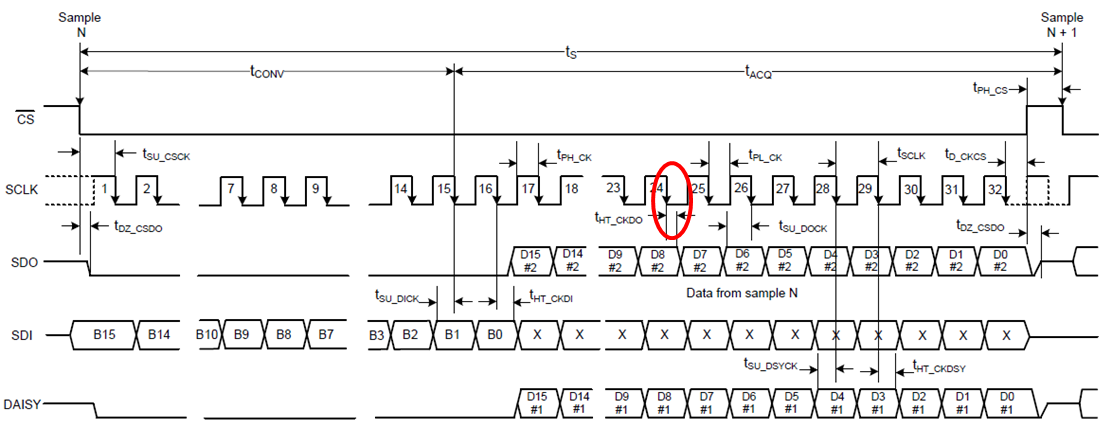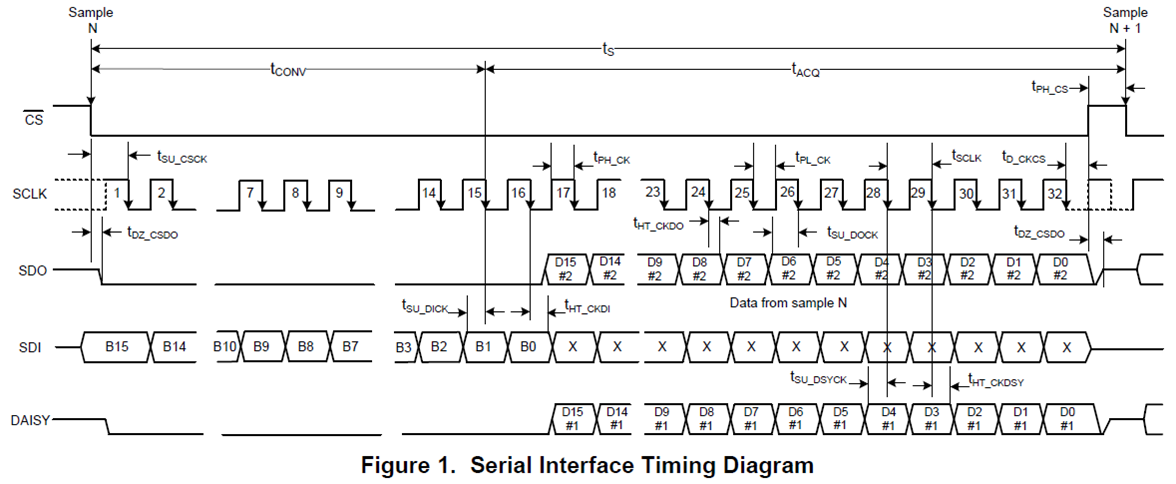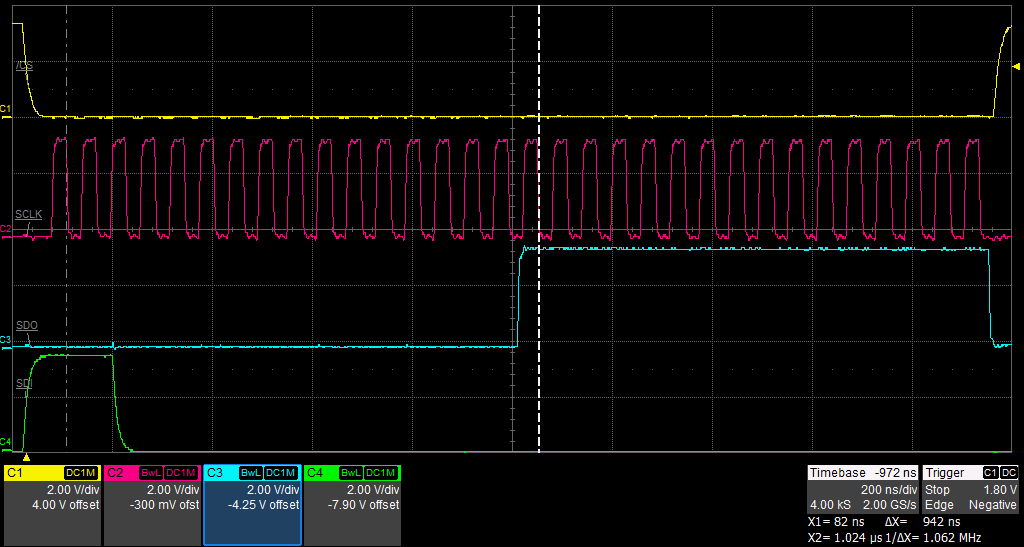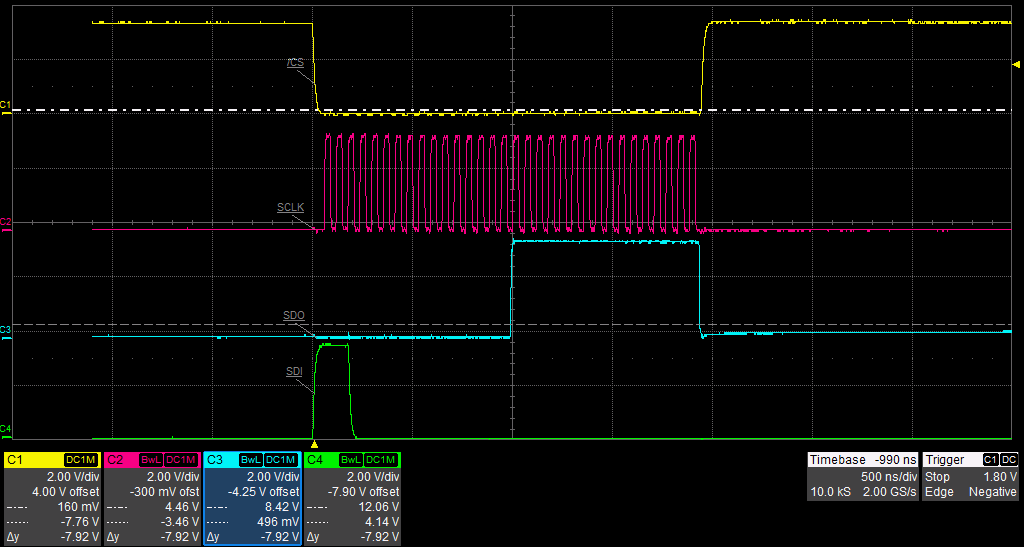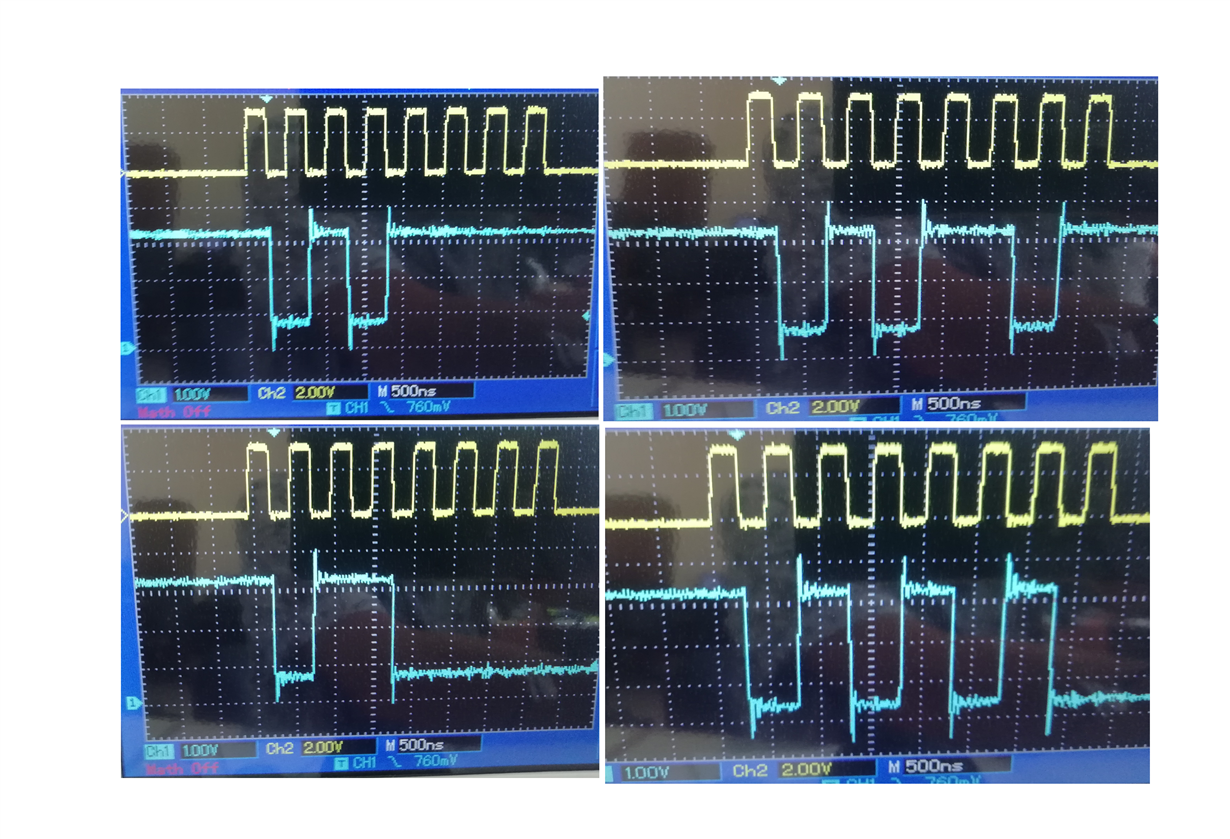Hello
ADS8684 on all channels, SPI gives random numbers, help me.
Records in the registers are not what they did.
SPI is set to the falling edge, the frequency is 300 kHz
code sample
uint_8t b1, b2, b3, b4;
SELECT_ADC; // low level output 38
SPI_SENDBYTE_ADC (0xC0); // 1 channel - 0xC0 2 channel - 0xC4
SPI_SENDBYTE_ADC (0x00);
SPI_SENDBYTE_ADC (0x00);
SPI_SENDBYTE_ADC (0x00);
UNSELECT_ADC; // high level output 38
delay_us (1);
SELECT_ADC;
SPI_SENDBYTE_ADC (0x00); // command NoOp
SPI_SENDBYTE_ADC (0x00);
b1 = SPI_SENDBYTE_ADC (0x00);
b2 = SPI_SENDBYTE_ADC (0x00);
UNSELECT_ADC;
delay_us (1);
SELECT_ADC;
SPI_SENDBYTE_ADC (0x00); // command NoOp
SPI_SENDBYTE_ADC (0x00);
b3 = SPI_SENDBYTE_ADC (0x00); // get the data
b4 = SPI_SENDBYTE_ADC (0x00); // get the data
UNSELECT_ADC;
The values in b1, b2, b3, b4 are random examples 0, 255, 1, 127, 254, 128
I checked the voltage at the pins of the chip
The voltage on channel 1 and 2 pin16,18 checked the supplied constant of 0.6V
pin 5 - 4.08 V
pin 7 - 4.12 V
pins 9,30 - 5.01V
pins 2,34 - 3.3 V
pins 3,4,6,8,31,32,33, 28,29,17,19,20,22 connected to the ground


